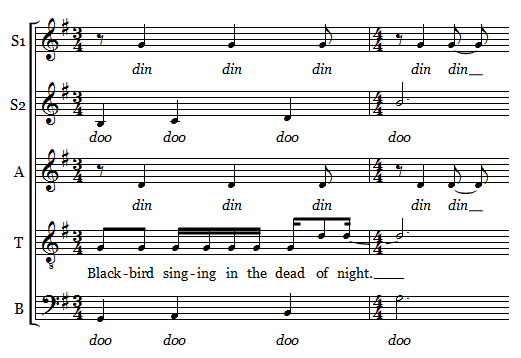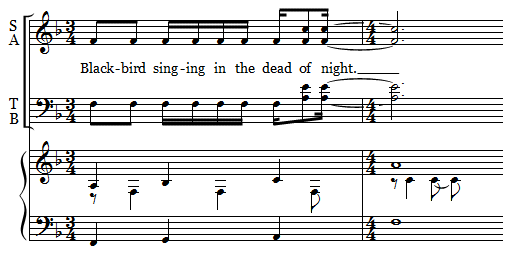 As a conductor you often have to play a score with a lot of staffs. This might be an a cappella piece, in which the parts are notated on separate staffs. It might be an arrangement for choir plus accompaniment. Such a piece of sheet music is not easy to play. At first you may be discouraged by all the notes. What might be a good way to learn such a score?
As a conductor you often have to play a score with a lot of staffs. This might be an a cappella piece, in which the parts are notated on separate staffs. It might be an arrangement for choir plus accompaniment. Such a piece of sheet music is not easy to play. At first you may be discouraged by all the notes. What might be a good way to learn such a score?
If you are playing complicated scores, at first you might try to play all notes. However, this will cause you to play very slow, and after a while you will lose overview and you will probably get tired. Let go of your urge to play all notes! Than you will be able to keep the flow in playing. Consider yourself not a pianist, but a conductor. You don’t have to play all notes, you are playing the score to get to know the notes. If you skip part of the notes, that is no problem. If you play wrong notes, it’s no bother. Don’t stop. You don’t have to correct the notes. Just try to hit the right notes next time you play them.
Instead of playing through the complete score slowly, you might play the score in different parts several times. Take a different objective each time you play. For example, the first time play only the melody and next play the melody plus the bass. Than you might add a third staff, or you might go on to play the piano part, et cetera.
If you know the score a little better after some playing, you might challenge yourself even more. You might try to play a harmonic reduction of the notes, that is to play all basic harmonies. Or you might want to try to go criss-cross through the score, and play the notes that you find the most important.
Five voices a cappella
Let us look at a concrete score. Suppose you want to play a score as the one below, an arrangement of Blackbird by The Beatles for choir with five voices a cappella:

The first time you play the score, you want to concentration the melody, thus the tenor part. The second time, you might play the melody plus the bass. In the meantime, you might have noticed that soprano 2 and bas are making thirds, so the next time you play the combination of these two parts. The fourth time, you might play the parts you didn’t play before, that is, soprano 1 and alto. Now try to combine these two voices with the bass. Finally try to play all voices except for the melody.
Choir with piano
Now suppose you want to play the score below for four voices and piano:

Again you start by playing the melody, in this case, the soprano. Next, you might combine the melody with the left hand of the piano. Than you might try to play all voices without the piano. The fourth time you might play the full piano part.